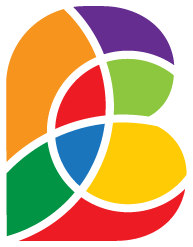
for piano and computer-generated sound (2011)
(The recording includes only the first half of music.)
Ciminelli Hall, Eastman School of Music, Rochester, US, Oct 2011
Lotus on Dense Orbit for piano and computer-generated sound was composed during the spring of 2012. The music mainly depicts the image of lotus under the moonlight on the rippling water. To describe the myriad undulating waves and reflected/refracted lights, I adopted Chaos and Fractal theory to create various series of numbers which make the multiple periods of repeating cycles; these are called as attracting periodic fixed points.
In the piece, there is no distinction between the lotus, moonlight, and water-waves, as in Buddhism, which is called nondualism. They are all sounds and lights based on the same material, which is the overtone series from the progression of fundamentals: A-C-D-E, from which I depicted the image of emerging lotus from the waves of light and water. At the second half of the piece (which is not recorded here), the lotus suddenly breaks up into the infinite number of particles of lights scattered into the air, and then submerged into the waves of time and light.
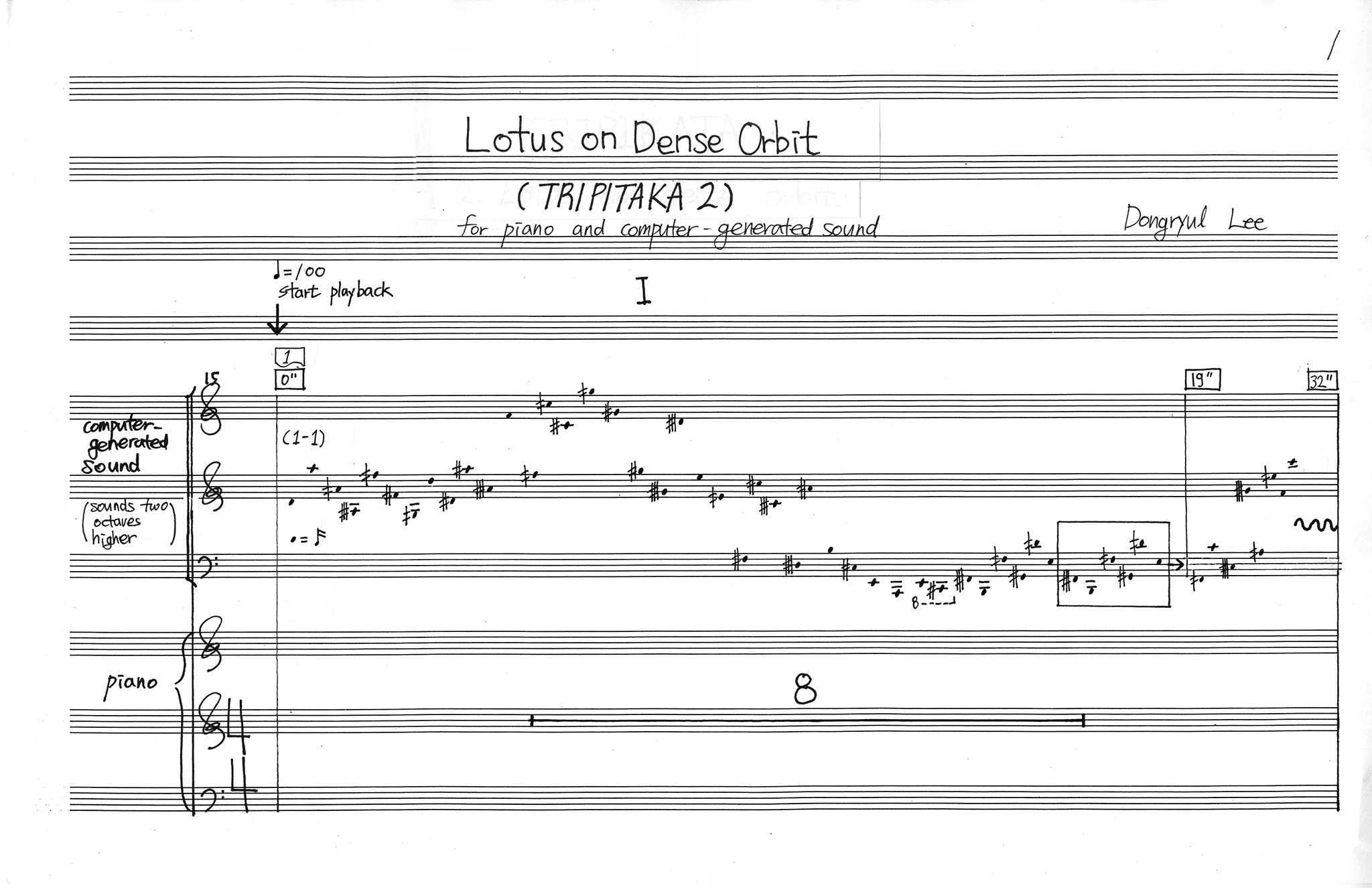
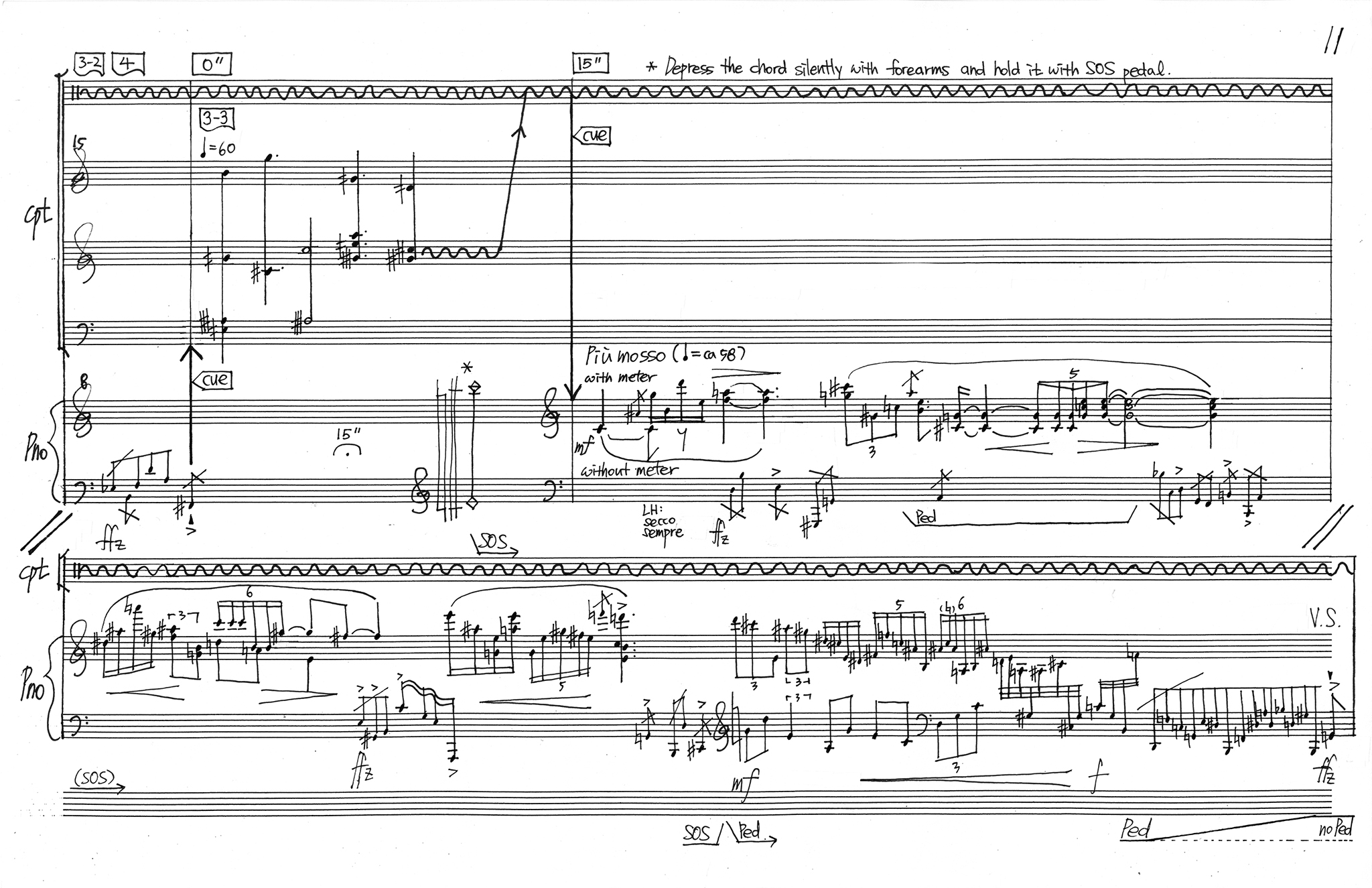

Premiere:
A Baroque quartet from Avanti! Chamber Orchestra
Eero Saunamäki, alto recorder
Jukka Rantamäki, violin
Jukka Rautasalo, violoncello
Jouko Laivuori, harpsichord
Sävellyspaja 2018, Sävellyskurssi Composition Masterclass
Pikkukirkko/Lilla kyrkan/The Little Church, Porvoo, Finland
Friday, June 29, 2018
Program notes
As Jukka Tiensuu pointed out in his article, "THE FUTURE OF MUSIC," it would be quite impossible to capture the implications of musical artwork in descriptive words. Here I will briefly explain the major ideas and musical materials I dealt with while composing the piece, but note that these elements are intricately intertwined with other resources which are not described here: from the explored / emerged yet unexplored ideas from my previous pieces, to a bird-song which I heard while walking in dusk during a transient season between the winter and spring (the piece was finished in mid-April.)
When I was asked to write a piece for a Baroque Trio (Sonata), the main idea came up instantly was the exquisite treatments of ornaments that were prevalent in Baroque music, especially the virtuosic playful game of lines; the crystallization of lines which only could be achieved by constantly teasing the time in music. Hudson's book, "Stolen Time: The History of Tempo Rubato" provided me a very detailed analysis on this fascinating topic, and some of the treatise really attracted my interests. These include “cascata”, “temps d'arrêt”, “anticipation and retardation”, and “fioritura.” All of these were techniques or skills with which Baroque musicians tantalized, charmed, and played with the time. I assembled these techniques, and normalized, modernized, personalized, and then deployed them in the piece.
Harmony is always the soul of my piece. For this piece I created a new tuning system and musical framework in which the melo-harmonic scales and formal structure are not based on the integer ratios of wavelength (string length), but based on the diameter ratios of a string. In this domain the inharmonic factor created by each string is different from the “real world”, so the timbre created by these strings is very unique and dissonant, but still rich and fully radiant. This harmonic “field” is rigorously generated from acoustical formulae, therefore the title “in Stile Francese” was appended to commemorate the scintillating French musical style of late 20st century.
Contratactus in Stile Francese is written for Sävellyspaja 2018 to be premiered by the Avanti! Chamber Orchestra.
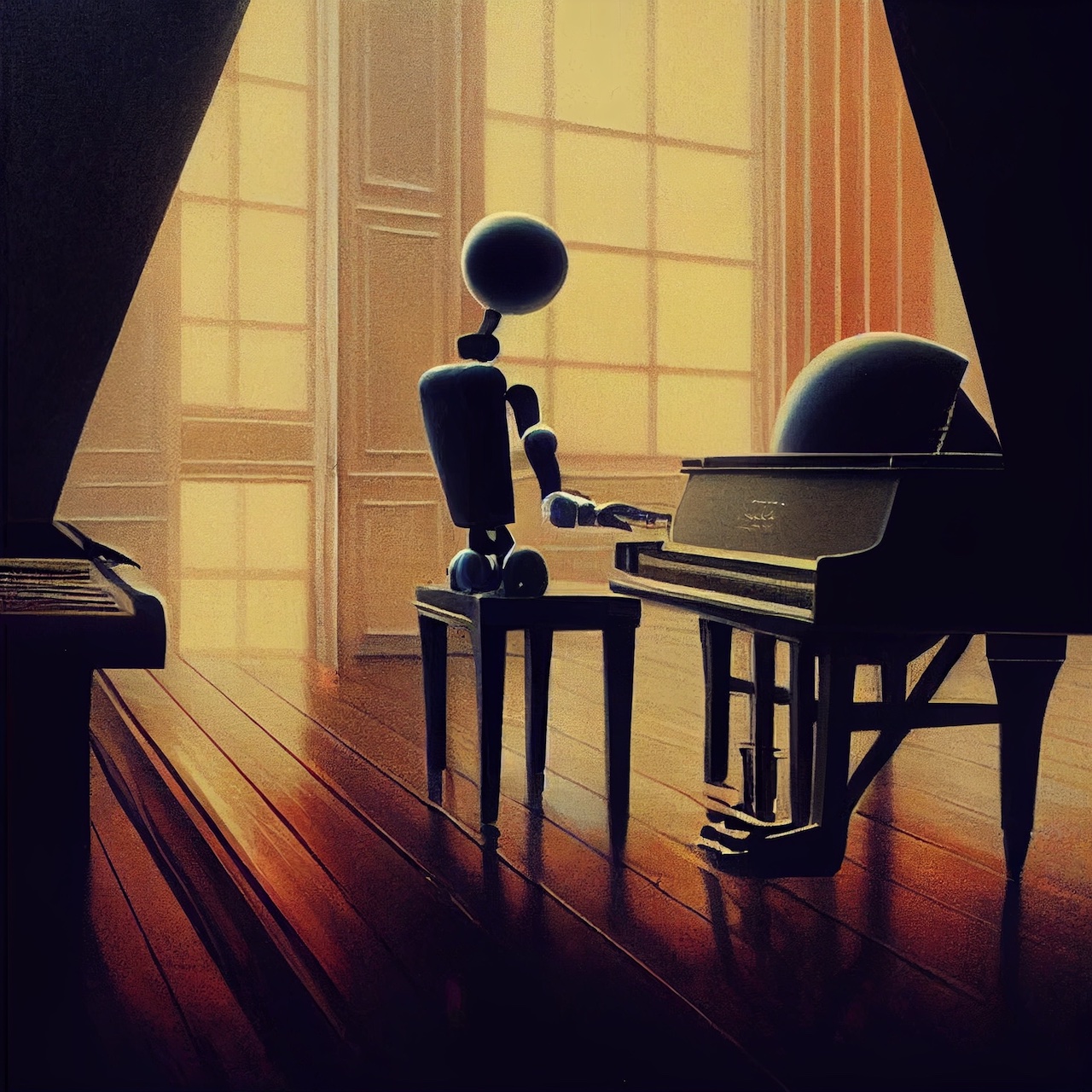
for Solo Piano
피아노를 위한, “겨울 밤의 여행자에 대하여"
Program notes
As evident from my website, I have recently replaced numerous pictures on the homepage with artificially synthesized images using a Deep Learning application. Nearly half of the images featured here have been generated by the “discord.” The rapid evolution of AI and Deep Learning algorithms is truly remarkable, and artists in the 21st century might find themselves in competition with AI-driven creations. Rather than compete with the technology, I find pleasure in embracing machines as collaborative creative partners.
In 2022, I embarked on a new phase of my research on Computer Music, in the field of Artificial Intelligence. To delve into this field, I studied MIT OCW’s Deep Learning course—a decision mirroring my choice back in 2010 when I studied differential equations, a significant contribution to my DMA research on virtual bells. For this, I began studying Python programming languages and exploring codes on the Google Colab platform. For over two months, I played with neural network codes, allowing the computer to learn circa 110 piano compositions written by Mozart. Following each learning process, which lasted between one and six hours (approximately 20 to 200 epochs—deep learning sequences), the computer generated fresh piano compositions within its comprehension of Mozart's musical context. Essentially, the computer composed pastiche pieces reminiscent of Mozart's style or aimed to counterfeit Mozart's works at its best.
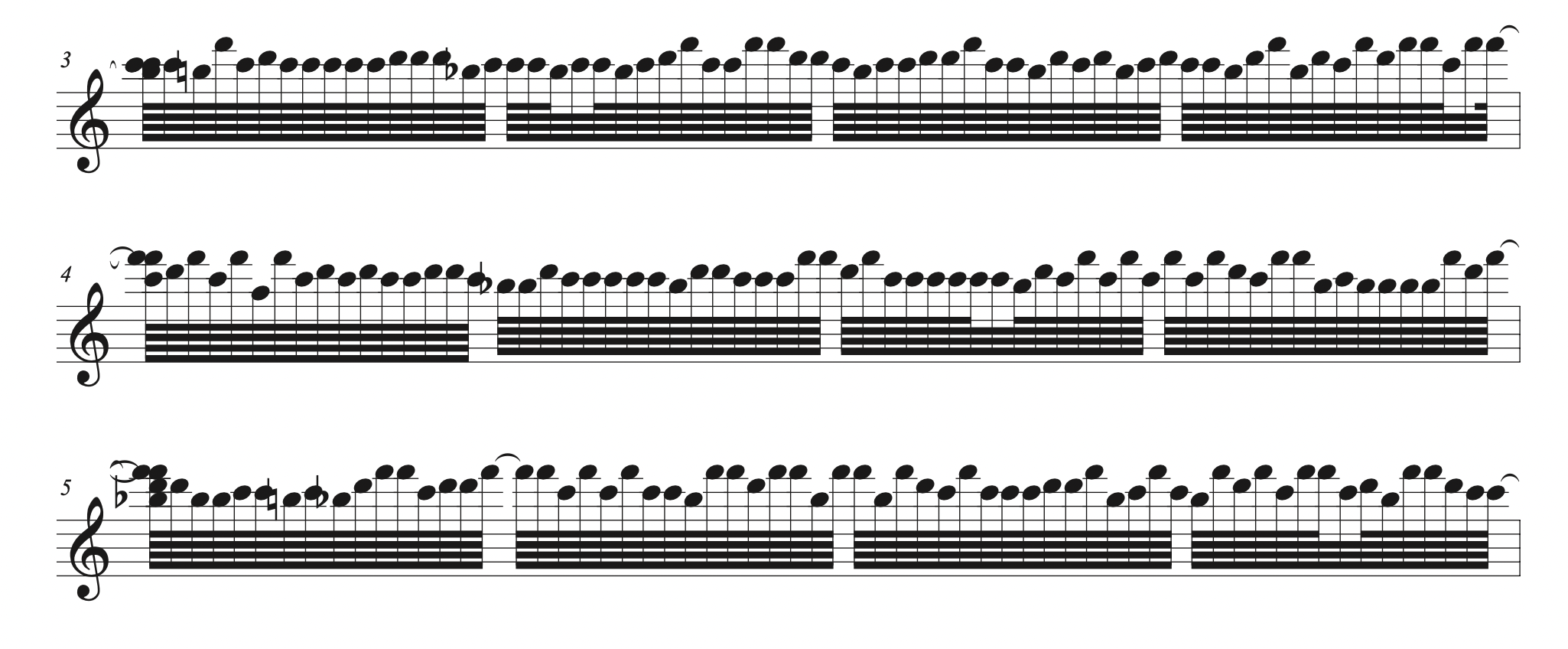
Deep Learning generated Output 020, sequence size 25, temperature 2, 74 epochs of learning
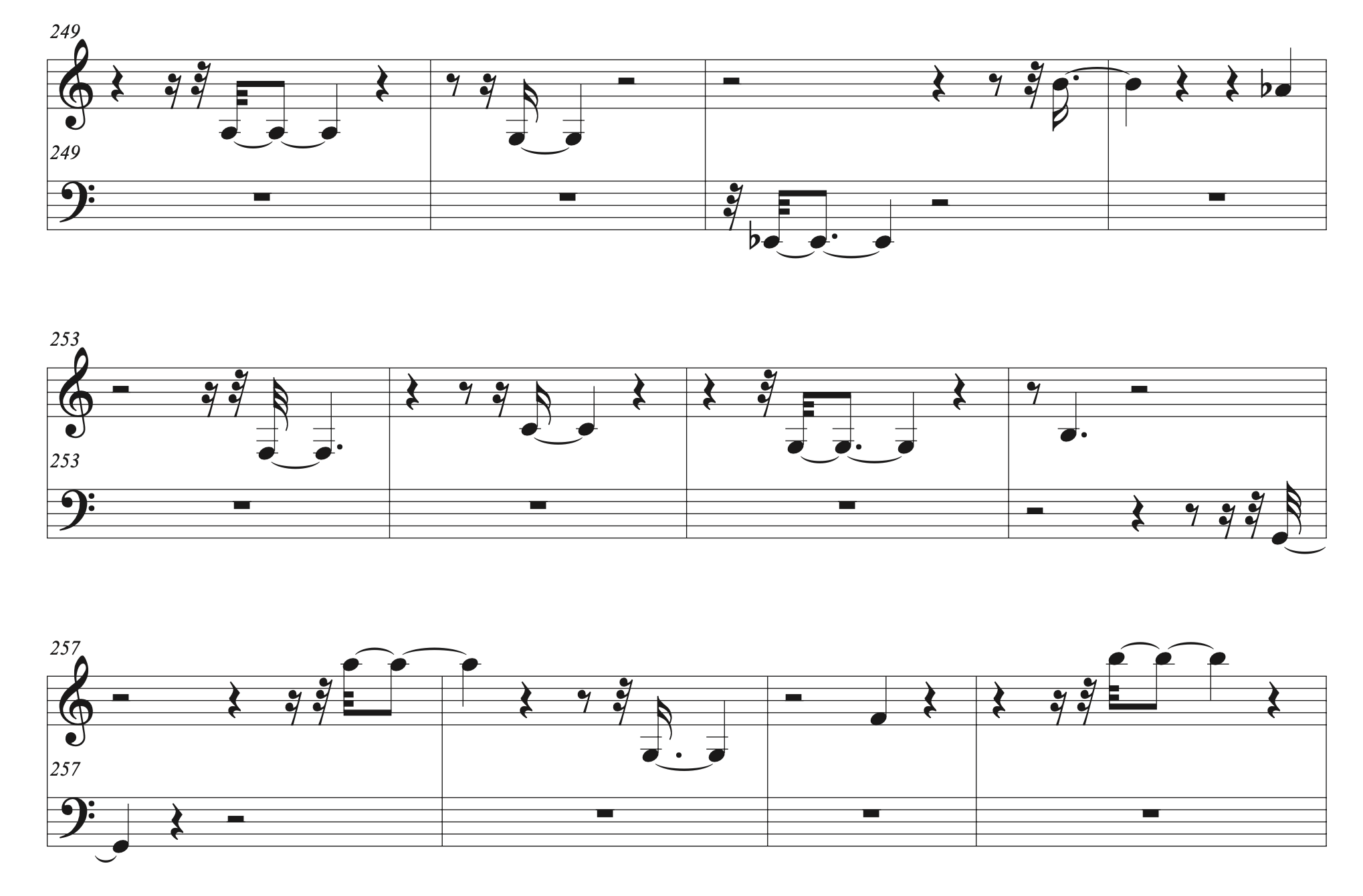
Deep Learning generated Output 062-2, 109 learned works, sequence size 256, weight: 0.085, learning rate: 0.001, optimization: RMSProp, 200 epochs of learning, temperature 3.7
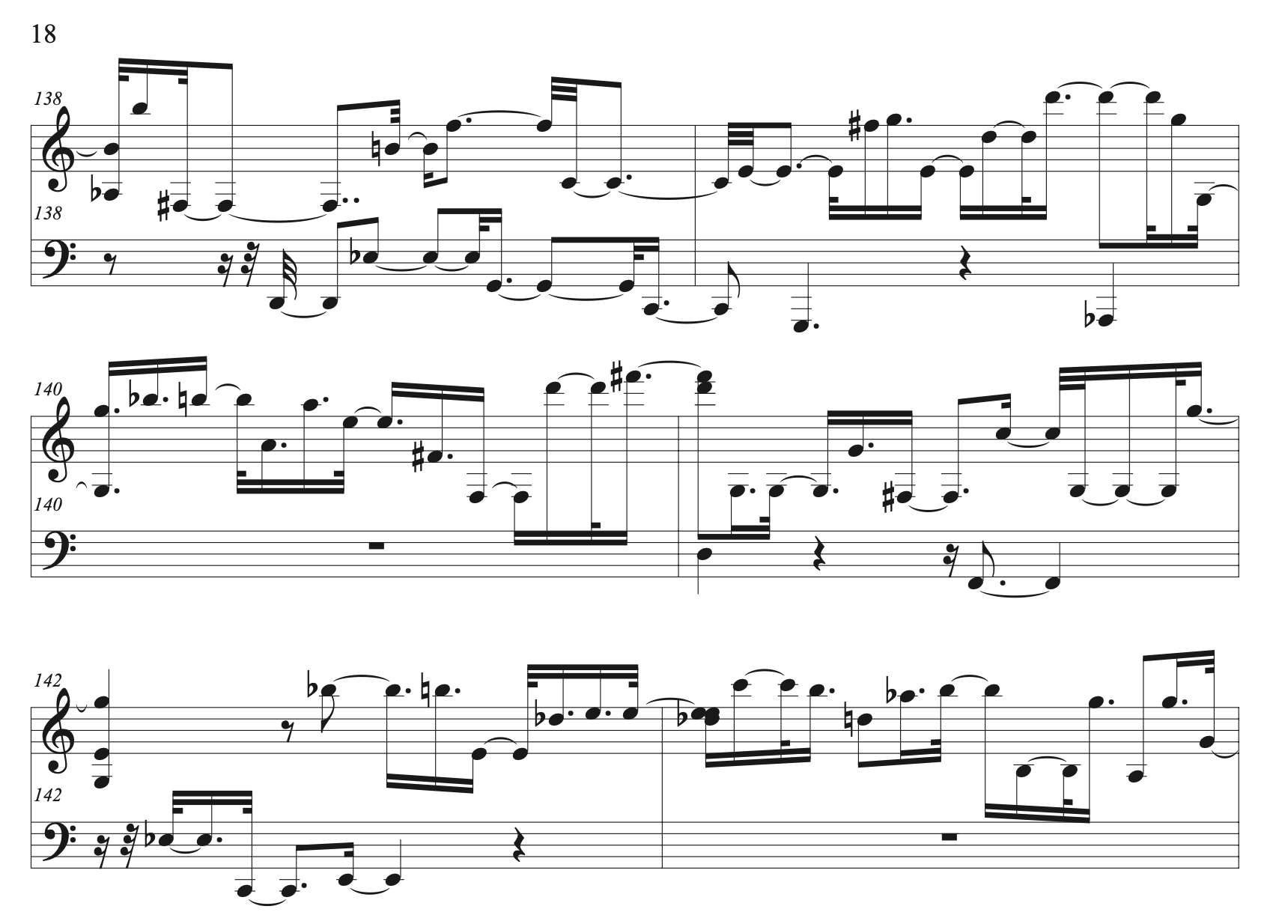
Deep Learning generated Output 063-6, 109 learned works, sequence size 256, weight: 0.085, learning rate: 0.001, optimization: RMSProp, 30 epochs of learning, temperature 3.9, seed piece: Fantasy in c minor KV366
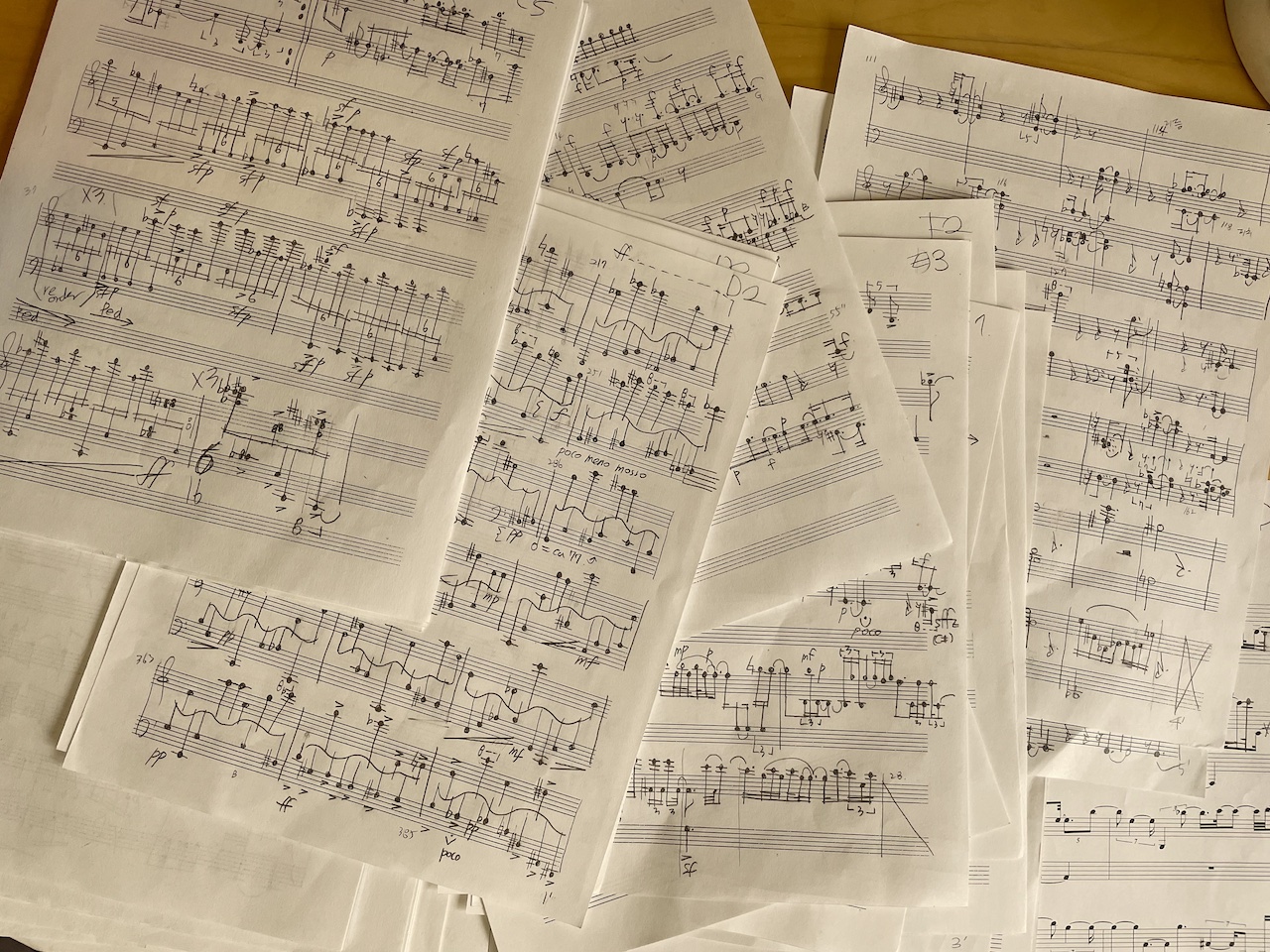
Original handwritten score of On a Winter’s Night a Traveller, The Deeply Learned Clavier
Due to the limitations of my access to the Google Colab platform and the constraints of session timeouts, I was constrained to a maximum of six hours for each deep-learning process, despite the fact that these processes typically demand significantly longer durations, often ranging from several days to weeks and months. Additionally, the available volume of model data-works proved insufficient for generating authentic Mozart-esque piano work, e.g., having Alberti basslines or crisp and concise phrase models which we can easily find in his oeuvre. Nonetheless, the outputs/works compiled by the computer implied various intriguing features that we can often find in the tonal music repertoire, including the presence of ambiguous tonalities that bridged different keys and modal mixture, diatonic scales and modes, repetitions, various patterns of chords and arpeggios, oftentimes realized in awkward, crude and rudimentary, or even anti-contrapuntal, artificial(of course) and mechanistic ways, in distorted and grotesque shapes.
For about a month I listened to these outputs, and began tracing the trajectories of the computer’s unfulfilled thoughts. I was almost an archeologist who discovered a pile of unfinished, improvisatory, spurious sketches written by an unknown composer or had been misattributed to Mozart(‘s virtual clumsy pupil, if more accurately described.) During the discovery process, I tried to reveal the computer’s intentions, develop his/her/their imagination, and transform and elevate it into my own artwork.
It is commissioned by and dedicated with admiration and gratitude to Ariel Mo, who beautifully world-premiered my Le Tombeau de Harvey in January 2022.
